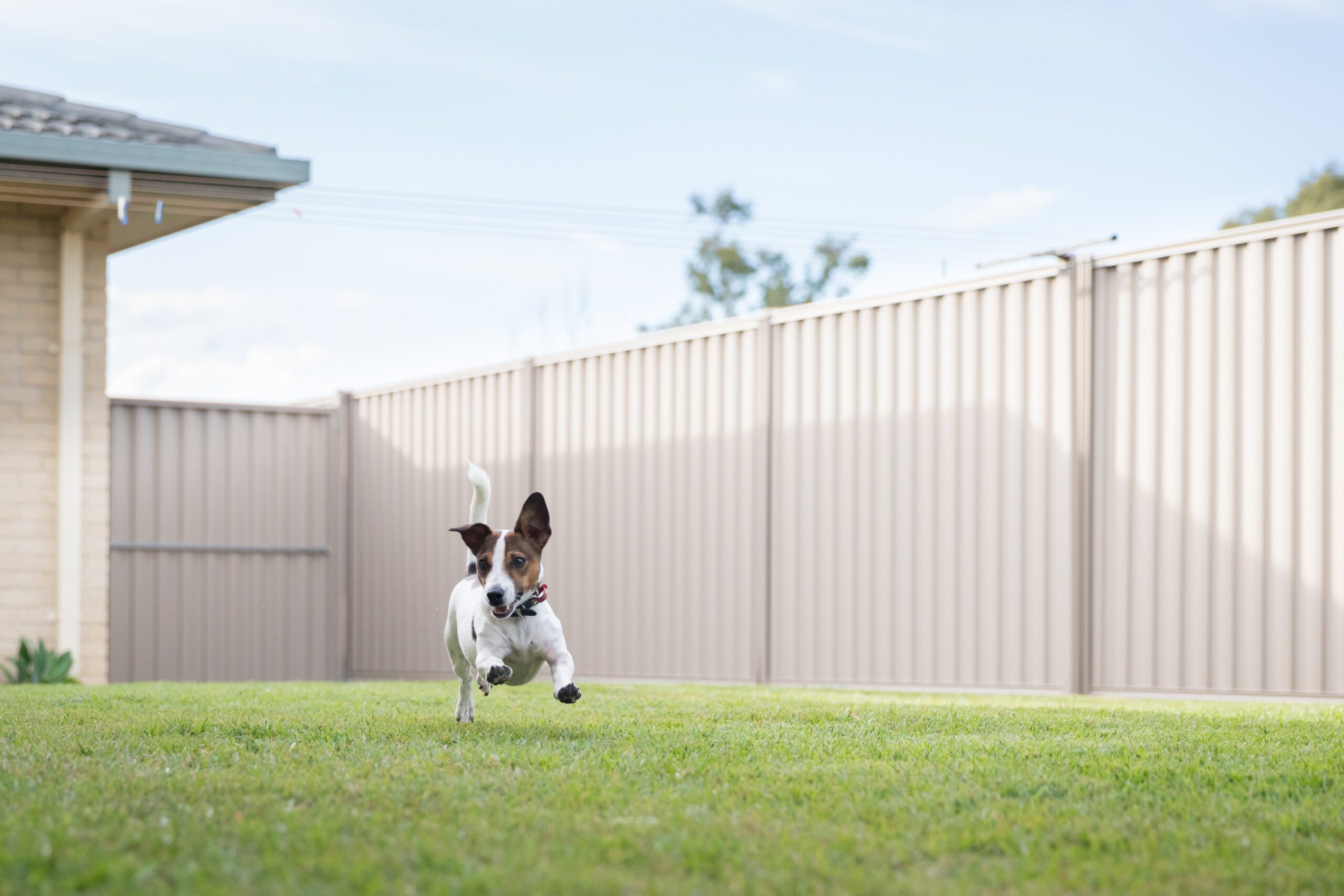Dogs are naturally curious and energetic animals. Some love to chase squirrels, explore new scents, or simply satisfy their inner escape artist. While it’s entertaining to watch them play in the yard, it can be frustrating when they start digging—especially if that digging happens right under your fence. If your dog keeps trying to tunnel out of your backyard, you’re not alone. Many pet owners deal with this issue, and luckily, there are several effective strategies to stop it.
In this blog, we’ll explore why dogs dig, how to identify escape-prone spots, and practical solutions for keeping your furry friend safely inside the yard.
Why Do Dogs Dig Under Fences?
Before you can fix the problem, it helps to understand why your dog is digging in the first place. Here are some common reasons:
- Boredom: Dogs left alone for long periods often dig for entertainment.
- Escape Attempts: Some dogs are trying to get to something—like another dog, a person, or even wildlife.
- Hunting Instincts: Terriers and other prey-driven breeds might dig to chase small animals like moles or rabbits.
- Anxiety or Stress: Separation anxiety can drive dogs to try escaping the yard.
- Comfort Seeking: In hot weather, dogs may dig to find cooler ground.
Once you figure out the cause, you can tailor your solution accordingly.
Step 1: Supervise and Deter
The first and simplest step is to observe your dog while they’re outside. If they start to dig, interrupt the behavior with a firm “No” and redirect them to a more appropriate activity. This teaches your dog what’s off-limits and gives them something better to do.
Also consider increasing your dog’s physical activity and mental stimulation. A tired dog is a content dog. Daily walks, games of fetch, puzzle toys, or training sessions can reduce their urge to dig.
Step 2: Reinforce the Base of the Fence
If your dog is targeting the same section of fence, it’s time to strengthen your physical barrier. There are several options:
1. Bury Chicken Wire
Dig a trench a few inches deep along the fence line and bury chicken wire in an L-shape—extending it down and outward toward the yard. This prevents the dog from getting under the fence without hurting them.
2. Add Gravel or Concrete
Filling the base of the fence with compacted gravel or even a narrow concrete footer can block access. This is especially effective for persistent diggers.
3. Install a Dig-Proof Barrier
Commercial products like “dig defense” barriers are designed specifically to stop animals from tunneling under fences. These metal panels slide into the ground and are easy to install with minimal tools.
Step 3: Use Landscaping to Your Advantage
You can use natural deterrents to make the fence line less appealing for digging.
- Large Rocks or Pavers: Place flat stones, bricks, or pavers along the base of the fence. They block digging and blend into your landscaping.
- Bushes or Shrubs: Dense plantings along the inside of your fence can discourage access to digging zones.
- Mulch with Deterrents: Some dogs dislike citrus or vinegar smells. Soaking mulch with safe but unpleasant scents may reduce interest in certain areas.
Step 4: Block the Visual Temptation
If your dog is digging because they’re excited by what they see outside the fence (like other dogs or animals), you can block their line of sight.
Try adding privacy panels, bamboo rolls, or solid fencing sections along problem areas. Out of sight, out of mind often applies to dogs too.
Step 5: Designate a Dig Zone
Sometimes the best way to manage digging is to redirect it. If your dog enjoys digging for fun, consider creating a dedicated dig zone in your yard:
- Loosen the soil in a corner area.
- Bury toys or treats there.
- Encourage digging only in that spot using praise and rewards.
This helps your dog satisfy their instincts without ruining your landscaping or escaping.
Step 6: Try Safe Deterrents
There are several dog-safe deterrents you can use to make digging spots less appealing:
- Motion-activated sprinklers: These startle your dog without harming them.
- Dog-safe repellents: Some pet stores sell sprays that discourage digging.
- Chicken wire or mesh on top of soil: Most dogs dislike the feeling on their paws.
When to Get Help
If your dog’s digging seems obsessive, extreme, or is part of separation anxiety, it may be time to consult a trainer or behaviorist. Sometimes digging is a symptom of a larger issue that needs professional support.
Final Thoughts
Keeping your dog from digging under the fence takes a combination of prevention, redirection, and sometimes reinforcement. With consistent effort and the right strategy, you can create a backyard that’s safe, secure, and enjoyable—for both you and your dog.
Whether you’re reinforcing the fence line, adding enrichment activities, or using natural deterrents, the goal is the same: keep your pup safely in the yard while letting them enjoy the outdoors.

